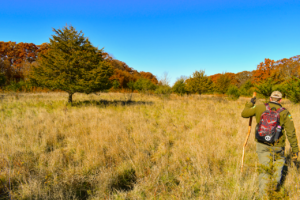
By Michael Swanger
In the midst of the COVID-19 pandemic that has forced us to shutter our lives in various ways, there may be no better opportunity to safely socially distance yourself from strangers and to enjoy some much-needed fresh air than by visiting one of Iowa’s state parks.
This year marks the 100th anniversary of the Iowa state park system which boasts more than 70 state parks, recreation areas and forests, as well as nearly 100 state preserves that are open to the public. Iowa’s Department of Natural Resources (DNR) is hosting a yearlong celebration to commemorate the centennial with special events and promotions — including the Iowa State Park Passport that gives visitors a chance to earn prizes — to connect Iowans to natural resources and to inspire an appreciation and stewardship of the state park system for future generations to enjoy.

Ledges State Park in Boone County became one of Iowa’s first state parks in 1924. Visit www.iowadnr.gov for updates regarding facilities and activities, as well as a complete listing of state parks. Photo courtesy of Department of Natural Resources
Historically, Iowa’s state park system has blossomed significantly since legislators passed a state parks bill on April 12, 1917. Beforehand, according to the Centennial Celebration Committee, which recently published “Iowa State Parks: A Century of Stewardship” (see this issue’s book reviews), public access to woods, lakes and rivers was limited without trespassing on private property as native forests, prairies and wetlands were disappearing due to increased urbanization and the growth of agriculture. A state board of conservation was created in 1919 after the bill’s passage and tasked with creating a plan for a park system. In 1920, Backbone State Park in northeast Iowa’s Delaware County opened as the first state park, followed by Lacey-Keosauqua State Park in southeast Iowa’s Van Buren County.
During the 1920s, as cars and infrastructure improved, as well as the Great Depression in the 1930s, Iowa’s state parks enjoyed its biggest period of growth, according to the Centennial Celebration Committee’s website: “It was kicked off in 1933, when the Iowa Board of Conservation and Fish and Game Commission jointly issued the Iowa Twenty-five Year Conservation Plan. Like the first report in 1919, this plan provided another visionary blueprint for how to move forward.”
With the assistance and manpower of the Civilian Conservation Corps (CCC) and the Works Progress Administration (WPA), the number of Iowa’s state parks rapidly grew. The CCC reportedly had more than 40 camps in the state “filled with young people eager to work.” The CCC and WPA, utilizing plans completed in 1919 and 1933, constructed roads, trails, picnic shelters, cabins and other recreation features until the United States entered World War II in 1941 and the country’s manpower and resources were diverted to the war effort.
From the 1950s to the 1970s, the state built facilities to improve its parks, including constructing campgrounds and artificial lakes. In 1965, the state preserve system was created. And in 1986, the Iowa Conservation Commission was assimilated into the DNR, which manages state lands and waters. Today, more than 13 million people annually visit Iowa’s state park system, including more than 900,000 overnight guests.
Thomas Macbride, the “Father of Iowa Conservation” and namesake of Lake Macbride State Park in Solon, was a leader of a civilian movement during the mid-1880s to preserve Iowa’s natural resources for public use. Macbride, a botany professor at the University of Iowa, worked with Louis Pammel, a fellow botany professor at Iowa State College in Ames, years before legislation was passed to set aside land for a statewide park system. Macbride called them “Places of Quiet Beauty.”
These days, we could all benefit by safely visiting a state park and marking a milestone for our “Places of Quiet Beauty.”
TO READ MORE FASCINATING STORIES ABOUT IOWA HISTORY, subscribe to Iowa History Journal. You can also purchase back issues at the store.
